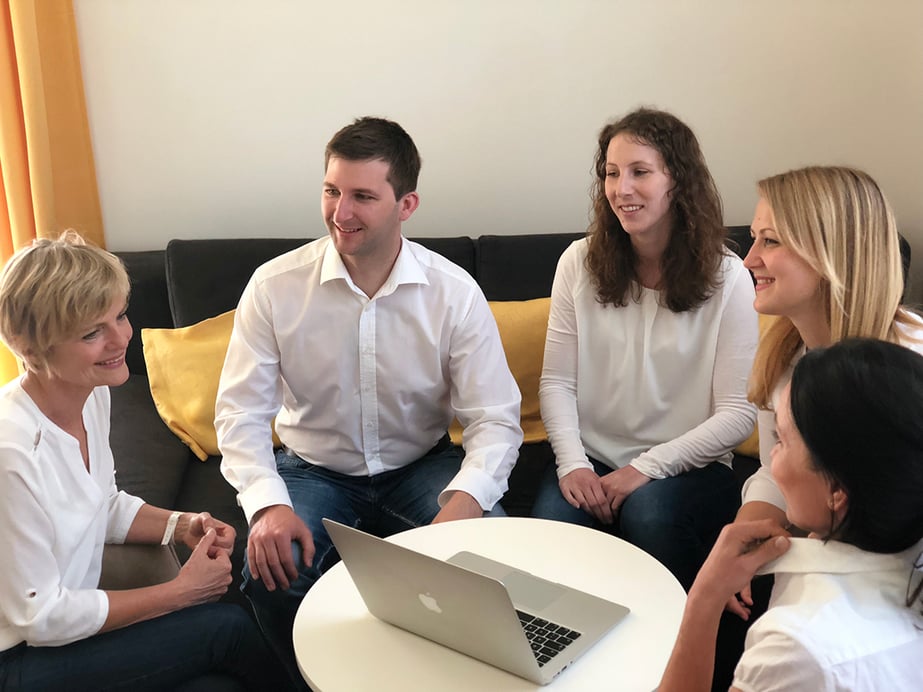 Speech is silver but silence is golden, they say. We couldn’t disagree more! When it comes to machine translation, it’s better for translation agencies to lay their cards on the table. Because although using artificial intelligence can save time and money, not all languages or all texts are suitable for it. So it’s crucial to have a partner you can trust!
Speech is silver but silence is golden, they say. We couldn’t disagree more! When it comes to machine translation, it’s better for translation agencies to lay their cards on the table. Because although using artificial intelligence can save time and money, not all languages or all texts are suitable for it. So it’s crucial to have a partner you can trust!
Honesty, fairness and transparency are the bedrock of a positive relationship, whether in business or anywhere else. You can’t have mutual trust without honesty, and that includes discussing issues in advance without being prompted by the other partner. This makes it easier for them to weigh up the pros and cons – they don’t have to rack their brains to work out if any information might have been withheld from them. And if the subject is machine translation, honest communication is more important than ever.
Google Translate & co on the march
Machine translation (MT for short) is here to stay. Almost everyone has used services like Google Translate to quickly translate a sentence into another language, and translation agencies have long since jumped on the bandwagon. But if professional, high-quality language services are required, the decisive factor is how exactly the translation agency goes about using MT.
Laying the cards on the table
Language service providers around the world are still getting to grips with using MT on a regular basis, so it’s a learning curve for everyone. There’s no magic formula in terms of how to use it, so to ensure everyone involved (client, translation agency, translator etc.) is on the same page, we believe it’s important to be clear about what using MT means. It can save time, and this should be reflected in the price: it’s fair and appropriate to offer different prices for “human translation” and “machine translation and full post-editing”. And every quote and order confirmation should state which service the client is paying for.
“Human translation” vs. “Machine translation and full post-editing”
On the face of it, MT doesn’t change anything: the client is still ordering and getting a translation. But the process used to create that product differs. “Human translation” refers to a translation produced by a human translator – though translation memories, term bases and other tools can (and should) be used as well. “Machine translation and full post-editing” involves the text being pre-translated by an MT engine and then being carefully edited (“Full post-editing”) by a professional translator, again using translation memories and term bases to help them. The aim is to deliver a translation comparable to one produced by a human translator, and the pre-translation from the MT engine usually allows the post-editor to work faster.
Quality comes first
But it would be wrong to assume that every text is suitable for machine translation and full post-editing. You will sometimes see MT services offering translations into lots of different languages, but that doesn’t mean that they’ll produce good results – and that’s before you take data security (or more accurately the lack of it) into account. Over the last few years, MEINRAD has invested a great deal of time and energy in testing various MT engines and establishing a quality assurance process, and we’ll keep our finger on the pulse. We have developed standards and guidelines that we expect our post-editors to follow, and we offer training in full post-editing: even the best MT engine won’t produce a high-quality translation without a professional human translator who knows how to finetune the machine output. Because quality comes first for professional language service providers like MEINRAD, simply switching from human translations to MT and full post-editing overnight is not a good idea. So we will only offer machine translation and full post-editing to our clients if we are confident that it will produce a high-quality end product.
Sometimes it simply isn’t the right choice
MT outputs have improved steadily over the last few years, and using machine translation is now a good option for lots of texts and language pairs – but not for all. For instance, software interface texts with limited context or creative slogans featuring vivid language remain unsuitable for MT. And if the source text contains complex syntax, the MT output will be more of a hindrance than a help for the translator. This is where our Project Managers and specialist translators come into their own: they’re experts at assessing whether a text is suitable for machine translation with post-editing or whether a human translation is required. If it’s the latter, we’ll tell you and explain why. So you as the client don’t have to decide whether your texts are suitable for MT – we’ll do it for you. And you don’t need to worry about having the wool pulled over your eyes.
Our Number One priority is to put a smile on your face. And that means being open and honest with you in everything we do.
Main image: © MEINRAD

